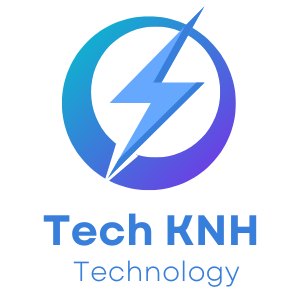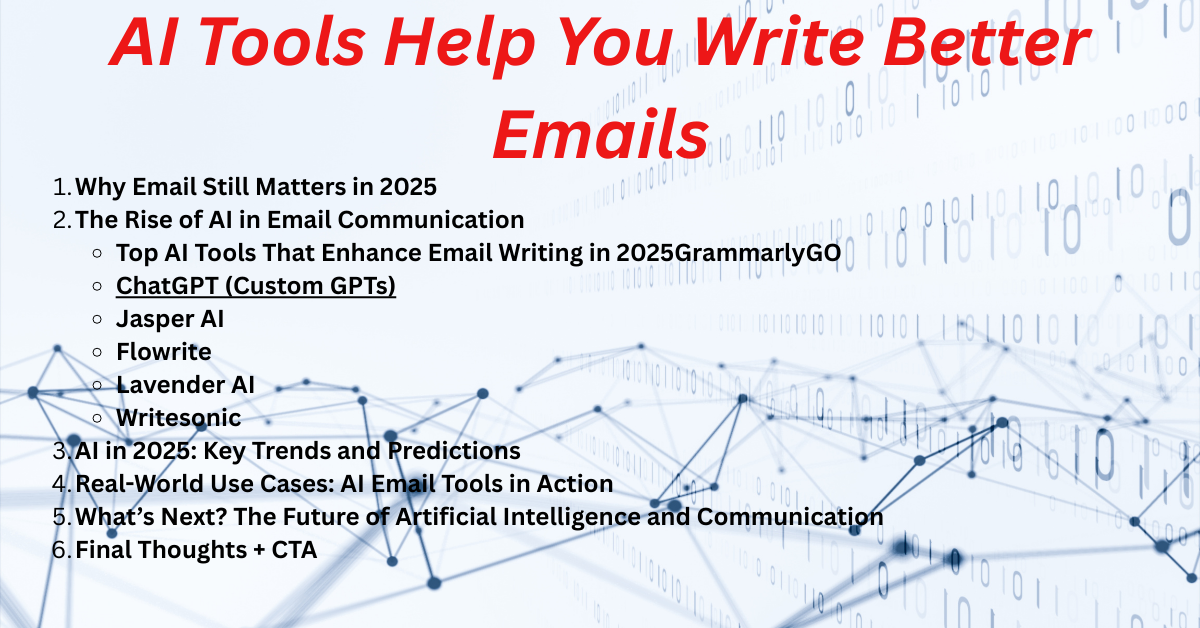The Future of Communication in the Age of Artificial Intelligence
AI Tools Help You Write Better Emails
In today’s fast-paced digital world, crafting professional, engaging emails can be time-consuming—especially when clarity, tone, and personalization matter. Fortunately, AI tools are stepping in to transform the way we communicate via email. From real-time grammar corrections to generating entire message drafts based on context, these tools use natural language processing and machine learning to enhance productivity and impact. Moreover, they adapt to your writing style, ensuring that every message sounds authentic and appropriate for its audience. As a result, professionals, students, and business owners can now write better emails faster, with improved confidence and efficiency.
Introduction: Your Inbox Just Got Smarter
AI Tools Help You Write Better Emails In 2025, the world is not only more connected—but also more automated. With over 347 billion emails sent daily (Statista, 2024), the need to craft smart, concise, and personalized messages has become a mission-critical task for professionals, business owners, and students alike. Yet, most of us still struggle to hit the sweet spot between clarity and engagement.
Enter: AI-powered email writing tools.

These aren’t your basic spell checkers. Today’s AI tools use advanced machine learning, natural language processing (NLP), and contextual awareness to help users write emails that connect, convert, and compel.
In this post, we’ll explore the best AI tools that are redefining how we write emails, the machine learning trends shaping 2025, and how businesses and professionals can leverage AI for communication success.
Table of Contents
- Why Email Still Matters in 2025
- The Rise of AI in Email Communication
- Top AI Tools That Enhance Email Writing in 2025
- GrammarlyGO
- ChatGPT (Custom GPTs)
- Jasper AI
- Flowrite
- Lavender AI
- Writesonic
- AI in 2025: Key Trends and Predictions
- Real-World Use Cases: AI Email Tools in Action
- What’s Next? The Future of Artificial Intelligence and Communication
- Final Thoughts + CTA
Why Email Still Matters in 2025
Despite the rise of Slack, WhatsApp, Discord, and internal communication tools like Microsoft Teams, email continues to dominate business communication.
According to Gartner (2024), email is still the primary mode of external communication for 86% of professionals globally.
Key Stats:
AI Tools Help You Write Better Emails
- 347B+ emails sent daily in 2024.
- 82% of businesses rely on email for customer retention and lead nurturing.
- Email marketing ROI sits at a whopping $42 for every $1 spent (DMA 2024).
Clearly, the email inbox is not dead—it’s evolving, and AI is leading the charge.
The Rise of AI in Email Communication
Artificial intelligence has stepped into the communication sphere with precision and flair. Here’s what’s changed:
What Makes Modern AI Tools Powerful?
- Contextual Intelligence: Understands tone, intent, and recipient relationship.
- Natural Language Generation (NLG): Generates human-like, brand-aligned responses.
- Personalization at Scale: Customizes mass emails for individual recipients.
- Efficiency Boost: Drafts replies, corrects grammar, and summarizes threads in seconds.
According to Forbes (2025):
“AI tools now save professionals over 4 hours weekly by automating routine email tasks.”
Top AI Tools That Enhance Email Writing in 2025
Let’s dive into the best AI tools helping users write emails that actually get read (and replied to):
### 🧠 1. GrammarlyGO
Best for: Professionals seeking clarity and tone control
![Suggested Image: GrammarlyGO interface showing tone adjustment sliders]
Features:
- Adjust tone (friendly, formal, assertive)
- Rewrite sentences for clarity
- Personalized AI prompts (context-aware)
- Gmail and Outlook integration
Why it shines in 2025:
With expanded multilingual support, GrammarlyGO has become a must-have for global teams and non-native speakers.
🤖 2. ChatGPT (Custom GPTs by OpenAI)
Best for: Versatile, smart, and personalized email writing
Features:
- Custom GPTs trained on your communication style
- Templates for outreach, follow-ups, and sales
- Summarizes long email threads
- Email plugins for Gmail, Outlook
Industry Quote:
“With ChatGPT’s custom GPTs, AI becomes your personal writing assistant—adapting to your tone, business goals, and even mood.” – OpenAI Product Update, 2025
🧵 3. Jasper AI
Best for: Sales teams, marketers, and cold outreach pros
Features:
- AI email templates for B2B outreach
- AIDA/PAS frameworks built-in
- Personalization tokens for mass mailing
- Integrates with CRMs like HubSpot and Salesforce
Trending Use Case (2025):
Startups use Jasper to automate investor updates, partner outreach, and customer onboarding emails.
✨ 4. Flowrite
Best for: Speedy responses and inbox zero warriors
Features:
- Turns bullet points into professional emails
- Instant response suggestions
- Email completion shortcuts
- Chrome extension for Gmail
Why it’s hot in 2025:
Flowrite’s smart summarizer helps you breeze through 200+ daily emails—perfect for executives and busy founders.
💼 5. Lavender AI
Best for: Sales email optimization
Features:
- AI email scoring (based on open/reply rates)
- Live coaching while writing
- Prospect research integrations
- Performance insights dashboard
Standout Stat:
Users report 2x higher response rates on cold emails when using Lavender’s scoring model.
⚡ 6. Writesonic
Best for: Marketing and multi-channel campaign emails
Features:
- Drip campaign content
- Email + landing page synergy
- Multi-language support
- AI-driven subject line tester
Emerging Trend:
Writesonic is increasingly popular in email + AI voice assistant campaigns for a seamless cross-channel experience.
AI in 2025: Key Trends and Predictions
The future of artificial intelligence in email is brighter and bolder than ever.
📊 Key Machine Learning Trends 2025:
- Hyper-personalization: AI tailors tone and format based on recipient behavior.
- Voice-to-email AI: Talk → Get a polished email draft in seconds.
- Behavioral Analysis: Predicts the best time to send an email for maximum engagement.
- Real-time translation: Seamlessly write and reply in any language.
- Emotion-aware writing assistants: Detect and adjust emotional tone.
“By 2026, 40% of outbound business communication will be AI-generated” — Gartner Emerging Tech Report, 2025
Real-World Use Cases: AI Email Tools in Action
📈 Business Owners:
Use ChatGPT + Jasper for customer onboarding and upselling emails. Saves time and increases conversion.
🎓 Students:
Flowrite helps structure internship applications, professor communication, and follow-ups—stress-free.
🏢 HR Teams:
GrammarlyGO + Lavender AI help craft hiring, rejection, and onboarding emails with empathy and professionalism.
💡 Startups:
AI tools are used for investor updates, cold outreach, and launch campaigns—keeping messaging consistent across teams.
What’s Next? The Future of Artificial Intelligence and Communication
As we look to 2026 and beyond, AI won’t just assist in writing—it’ll lead strategy.
Soon, your AI email assistant will:
Analyze tone mismatches and recommend rephrasing
Predict customer needs and suggest proactive communication
Sync with meetings to automatically send recaps
Auto-generate newsletters from weekly insights


